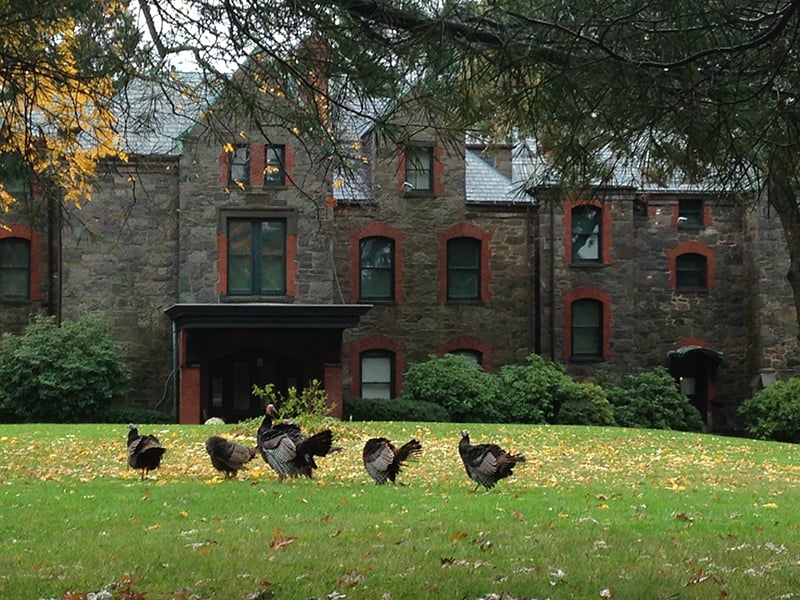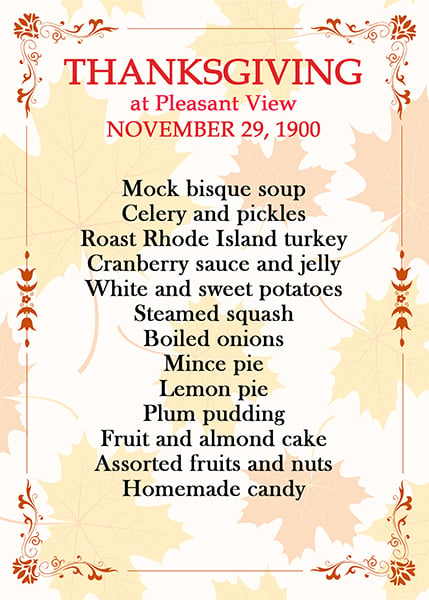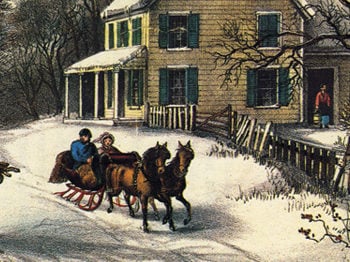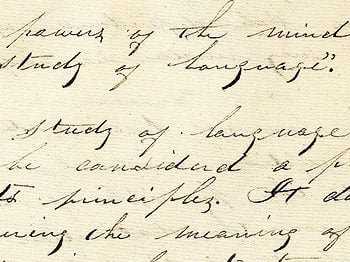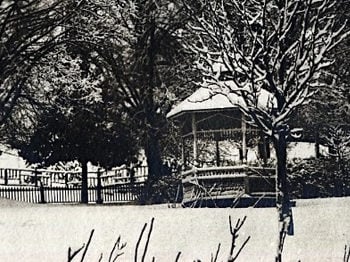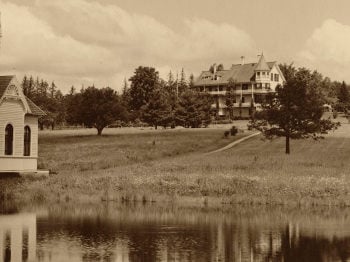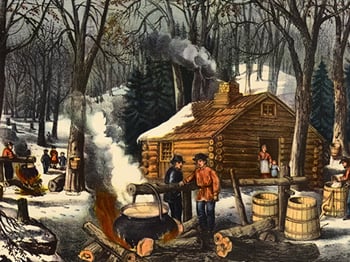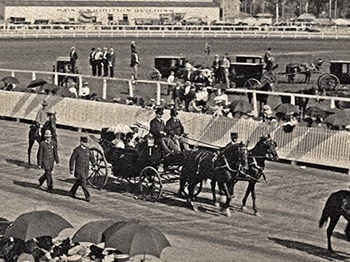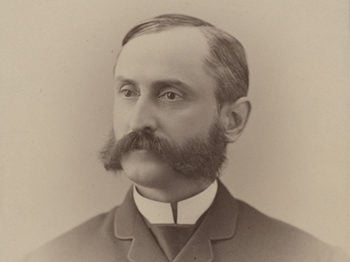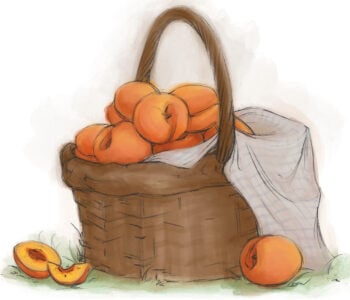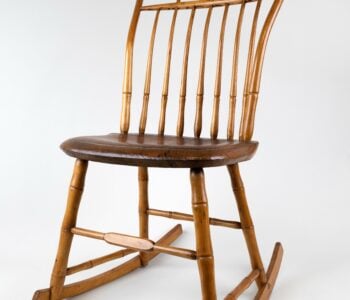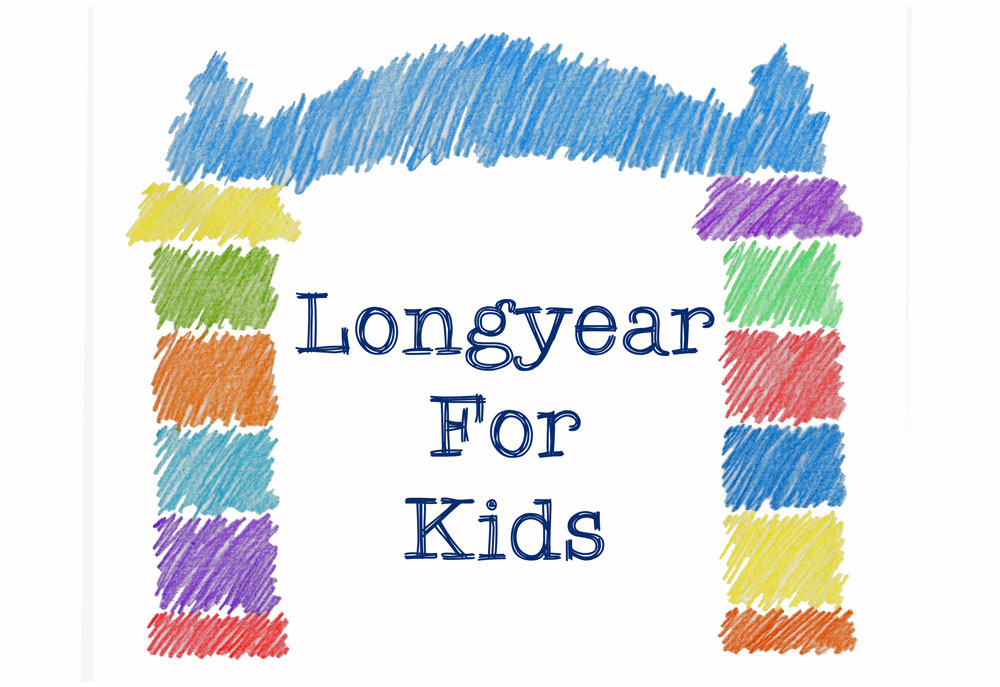 This article is part of our Longyear for Kids series, written with a younger audience in mind. See more articles in the series here.
This article is part of our Longyear for Kids series, written with a younger audience in mind. See more articles in the series here.
Did you know that a turkey dinner with all the trimmings was Mary Baker Eddy’s favorite meal to serve to guests? And did you know that the main course was always followed by dessert — at least two or three different kinds — “so that everyone was sure to find something he could enjoy”?1
Here’s what was on the Thanksgiving menu for November 29, 1900,2 at Pleasant View, Mrs. Eddy’s home in Concord, New Hampshire:
Wow! It’s hard to imagine anyone gathered around that dinner table going hungry, isn’t it? How does Mrs. Eddy’s menu compare with what your family serves?
Food wasn’t the only thing Mrs. Eddy was thinking about on that particular Thanksgiving, however. When a Boston newspaper asked her what she thought the holiday should signify to all mankind, Mrs. Eddy replied in part, “the Bible better understood and Truth and Love made more practical; the first commandment of the Decalogue more imperative, and, ‘loving thy neighbor as thyself,’ more possible and pleasurable.”3
“Loving your neighbor” certainly describes the way Mrs. Eddy celebrated Thanksgiving. She loved to invite those who had no home of their own — she affectionately called them “orphans” — to spend the holiday with her, welcoming them “to Mother’s home for dinner.”4 At Thanksgiving time in 1895, she wrote to one, “I have invited some of my students who must miss their home and friends on that festal day to come and sit at our table and we will try to cheer them and bless them.”5
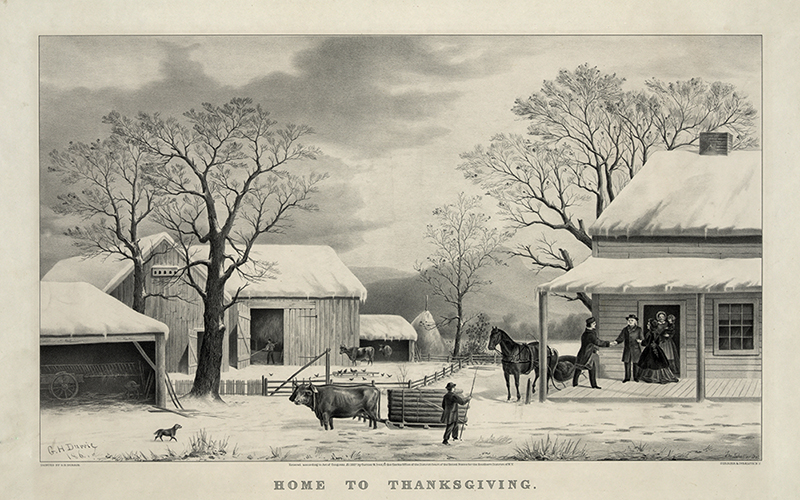
A day of thanksgiving and praise
Growing up in Bow, New Hampshire, just 100 miles north of Plymouth, Massachusetts, young Mary Baker would have been familiar with tales of the first harvest meal shared between the Plymouth colonists and Wampanoag Indians in 1621. When those religious reformers left England and crossed the Atlantic Ocean seeking freedom and prosperity, they faced a harsh first winter in New England. Thanks to several Native American groups who taught the newcomers how to harvest corn, extract sap from maple trees, and catch fish, the colonists survived. In gratitude, Governor William Bradford organized a three-day feast to celebrate, and in the centuries that followed, giving thanks to God for prosperity and blessing while sharing a meal was common.
Although it would not become a national holiday until the latter half of the 19th century, Thanksgiving was celebrated widely in New England during Mrs. Eddy’s childhood, and several early letters between the Baker family members mention the holiday. The festive meal would have been especially meaningful to farming families like the Bakers, who raised and produced almost all their own food, and who would have proudly displayed and feasted upon the fruit of that year’s harvest.6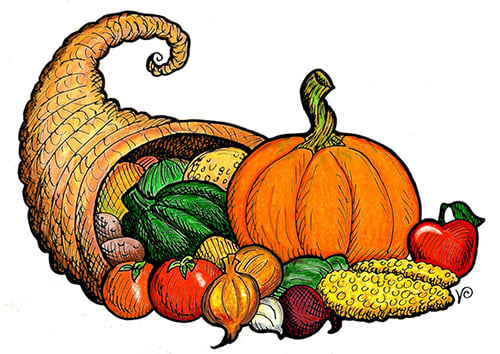 In 1837, when Mary Baker was 16 years old, the influential American writer and editor Sarah Josepha Hale advocated for a national day of celebration — one in which the spirit of the holiday would best be expressed “in making others happy.”7 Whether or not she was aware of Mrs. Hale’s efforts, Mary would take this sentiment to heart in her own future Thanksgiving celebrations.
In 1837, when Mary Baker was 16 years old, the influential American writer and editor Sarah Josepha Hale advocated for a national day of celebration — one in which the spirit of the holiday would best be expressed “in making others happy.”7 Whether or not she was aware of Mrs. Hale’s efforts, Mary would take this sentiment to heart in her own future Thanksgiving celebrations.
On October 3, 1863, during the height of the Civil War, President Abraham Lincoln finally established Thanksgiving as a national holiday. It would be, he proclaimed, a day of “Thanksgiving and Praise to our beneficent Father who dwelleth in the Heavens.”8
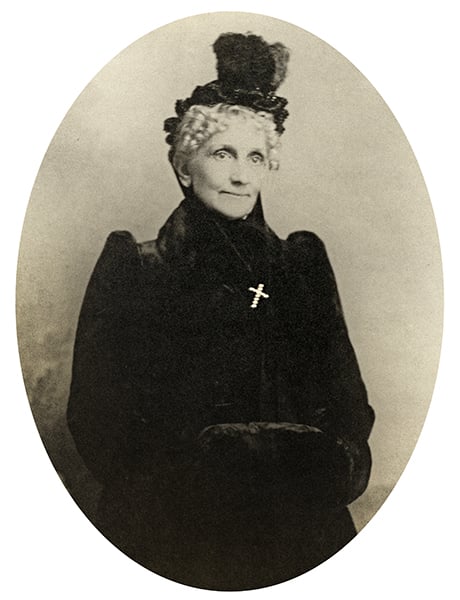
Counting our blessings
Eventually, Mrs. Eddy’s love of Thanksgiving would lead her to establish a Thanksgiving church service. These services are a time for church members and visitors to come together and be grateful for their blessings. A message from the Bible and the Christian Science textbook, Science and Health with Key to the Scriptures, is followed by a special time for “testimonies by Christian Scientists, appropriate for the occasion,” as the Church Manual puts it.9
“How good it is to remember our mercies, and to remember nothing else,” Mrs. Eddy wrote at Thanksgiving time in 1896.10 And in the first chapter of Science and Health she asks us: “Are we really grateful for the good already received? Then we shall avail ourselves of the blessings we have, and thus be fitted to receive more.”11
